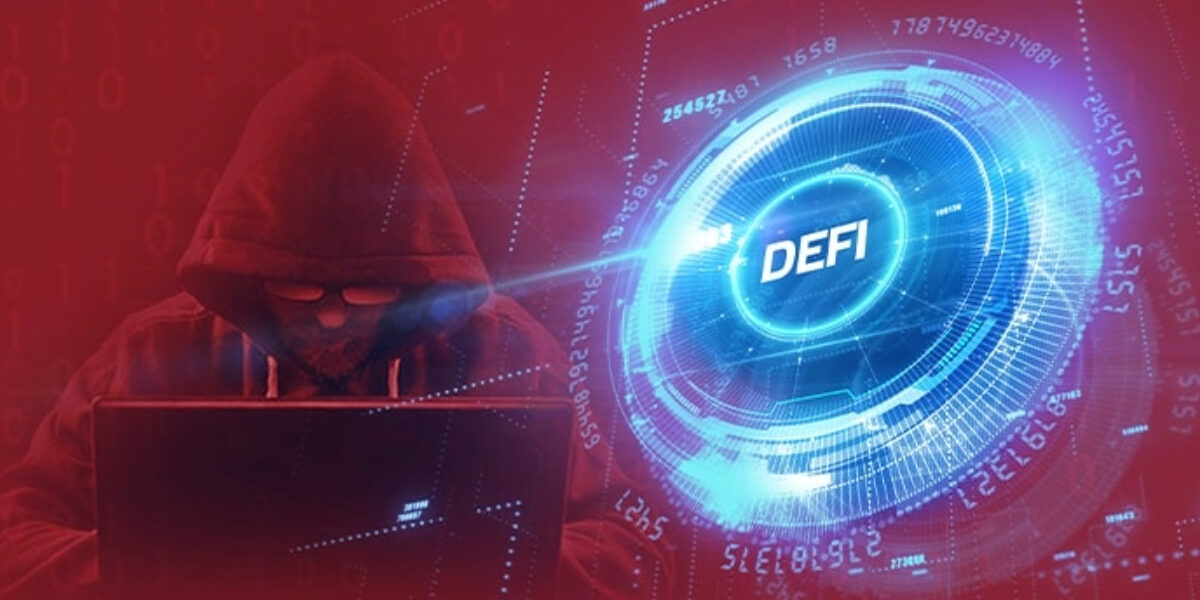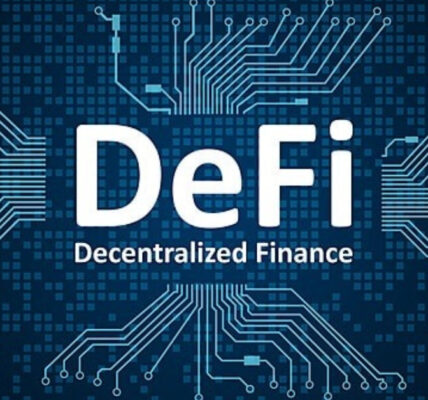Decentralized Finance (DeFi) has quickly become one of the most significant trends in the blockchain and cryptocurrency space. By leveraging smart contracts and blockchain technology, DeFi offers the promise of a decentralized, trustless, and transparent financial system that can operate without traditional intermediaries such as banks. However, while DeFi has disrupted traditional finance, it has also faced numerous security challenges.
Over the years, the DeFi space has experienced several high-profile hacks and exploits, revealing the vulnerabilities inherent in many protocols. These incidents have not only caused financial losses but have also highlighted the importance of robust security practices for the continued growth and adoption of DeFi. In this article, we will explore the evolution of DeFi security, examine lessons learned from past exploits, and discuss how the ecosystem can improve its security moving forward.
Early Days of DeFi: Ambitious Projects and Growing Pains
The early days of DeFi were marked by experimentation and innovation, with numerous projects emerging in 2017 and 2018. These projects aimed to replicate traditional financial services such as lending, borrowing, and trading on decentralized platforms. At this stage, security was often an afterthought, and many protocols were rushed to market without adequate security testing or audits.
One of the first major incidents in the DeFi space occurred in 2018, when the bZx protocol was exploited. Hackers took advantage of a vulnerability in bZx’s smart contracts, manipulating the price of a token to drain funds from the platform. This attack highlighted the risks of relying on smart contracts without sufficient security measures in place.
While bZx was not the first DeFi exploit, it served as a wake-up call for developers and the broader DeFi community. It underscored the need for proper security audits, thorough testing, and a more cautious approach to deploying DeFi protocols.
The Rise of Flash Loan Attacks
As DeFi continued to grow, flash loans became a common feature of many protocols. Flash loans allow users to borrow large sums of money without collateral, provided the loan is repaid within the same transaction. While flash loans offer unique opportunities for arbitrage and liquidity provision, they also introduced new security risks.
Flash loan attacks became increasingly prevalent in 2020, as attackers began to exploit the lack of safeguards in many DeFi protocols. One of the most notable flash loan exploits occurred in February 2020 when the dForce protocol was attacked. The attacker used a flash loan to manipulate the price of assets on dForce’s lending platform, draining over $25 million in assets from the protocol.
Flash loan attacks are particularly dangerous because they can be executed in a single transaction, making them difficult to detect before it is too late. They also take advantage of vulnerabilities in the underlying smart contracts and liquidity pools, which can be manipulated by experienced attackers.
The rise of flash loan attacks highlighted the need for DeFi projects to implement stronger safeguards against price manipulation and ensure that their contracts are properly tested and audited. It also underscored the importance of ensuring that liquidity pools are designed to withstand large, sudden fluctuations in asset prices.
The DAO Hack and Its Long-Lasting Impact
While the DAO hack of 2016 occurred before the rise of DeFi, it had a profound impact on the development of the ecosystem. The DAO (Decentralized Autonomous Organization) was a venture capital fund built on the Ethereum blockchain, and it raised over $150 million in Ether from thousands of investors. However, a vulnerability in the DAO’s smart contract allowed an attacker to exploit a reentrancy flaw and siphon off approximately $60 million worth of Ether.
The DAO hack is one of the most significant events in Ethereum’s history and serves as a constant reminder of the importance of security in smart contracts. In response to the hack, the Ethereum community made the controversial decision to hard fork the Ethereum blockchain, effectively reversing the hack and returning the stolen funds to the original investors.
The DAO hack demonstrated the potential risks of smart contract vulnerabilities and emphasized the need for thorough auditing and testing before launching any decentralized applications. It also led to the development of best practices for smart contract security, such as using well-established code libraries and undergoing independent security audits.
The Growth of Security Auditing Firms and Tools
In the aftermath of the early exploits, the DeFi space began to recognize the importance of professional security audits. A number of auditing firms and tools emerged to help developers identify vulnerabilities in their smart contracts and improve the overall security of DeFi protocols.
Companies such as CertiK, Trail of Bits, and OpenZeppelin began to offer security auditing services, providing in-depth analysis of smart contracts and highlighting potential vulnerabilities. These firms have become essential players in the DeFi ecosystem, helping projects secure millions of dollars in assets and gain the trust of users and investors.
In addition to professional auditing firms, various open-source security tools and frameworks have been developed to help developers secure their smart contracts. For example, tools like MythX, Slither, and Securify can perform static analysis of smart contracts to detect common vulnerabilities and errors. These tools have become indispensable for developers looking to ensure the security of their contracts before deployment.
As the DeFi ecosystem matures, the role of auditing firms and security tools has become even more critical. With the growing amount of capital flowing into DeFi, it is essential that developers prioritize security and undergo rigorous testing and audits before launching new protocols.
Recent Exploits and the Importance of Ongoing Vigilance
Despite the lessons learned from past exploits, DeFi security remains a significant concern. In recent years, there have been several high-profile hacks, including the Poly Network hack in 2021, which saw attackers steal over $600 million in assets. Although the hackers later returned the stolen funds, the attack highlighted the vulnerability of cross-chain protocols and the need for enhanced security measures.
Another significant exploit occurred in 2021, when attackers exploited a vulnerability in the PancakeBunny protocol, draining millions of dollars in assets from the platform. This attack demonstrated the risks associated with yield farming and liquidity pools, which are common features of many DeFi protocols.
These recent exploits underscore the importance of ongoing vigilance in the DeFi space. As the ecosystem evolves, so too do the tactics and methods used by attackers. It is crucial for developers to stay up-to-date with the latest security practices, regularly audit their contracts, and be proactive in addressing potential vulnerabilities before they can be exploited.
The Path Forward: Improving DeFi Security
The evolution of DeFi security has been shaped by the lessons learned from past exploits. While the industry has made significant progress in securing smart contracts and protocols, there is still much work to be done.
To improve DeFi security moving forward, developers should focus on the following key areas:
- Education and Awareness: Developers must be educated about the risks and challenges associated with smart contract development. Security training and awareness programs can help developers better understand the potential vulnerabilities in their code and how to mitigate them.
- Comprehensive Auditing: Regular and thorough security audits should be a standard practice for all DeFi projects. Developers should engage independent auditing firms and use automated tools to identify and address vulnerabilities.
- Bug Bounties and Community Involvement: DeFi projects should consider offering bug bounties to incentivize the community to identify and report vulnerabilities. Engaging the community in security efforts can help identify issues that might otherwise go unnoticed.
- Cross-Protocol Security: As DeFi protocols become more interconnected, ensuring the security of cross-chain interactions and multi-protocol ecosystems will be essential. Developers should prioritize securing bridges, oracles, and other cross-chain mechanisms to prevent attacks.
- Transparency and Open Source Development: Transparency in the development process can help ensure that code is subject to community scrutiny and peer review. Open-source development also allows security experts to contribute to improving the overall security of the ecosystem.
Conclusion
The evolution of DeFi security has been shaped by several high-profile hacks and exploits, each offering valuable lessons for the community. As the DeFi space continues to grow, developers must prioritize security to protect users and assets. By learning from past mistakes, implementing best practices, and embracing a culture of security, DeFi can continue to thrive and disrupt traditional financial systems without compromising safety.
The journey toward secure DeFi protocols is ongoing, but with increased awareness, rigorous audits, and community involvement, the industry can build a more resilient and trustworthy ecosystem. As the DeFi space matures, security will remain a top priority, ensuring that decentralized finance can continue to revolutionize the financial world.




